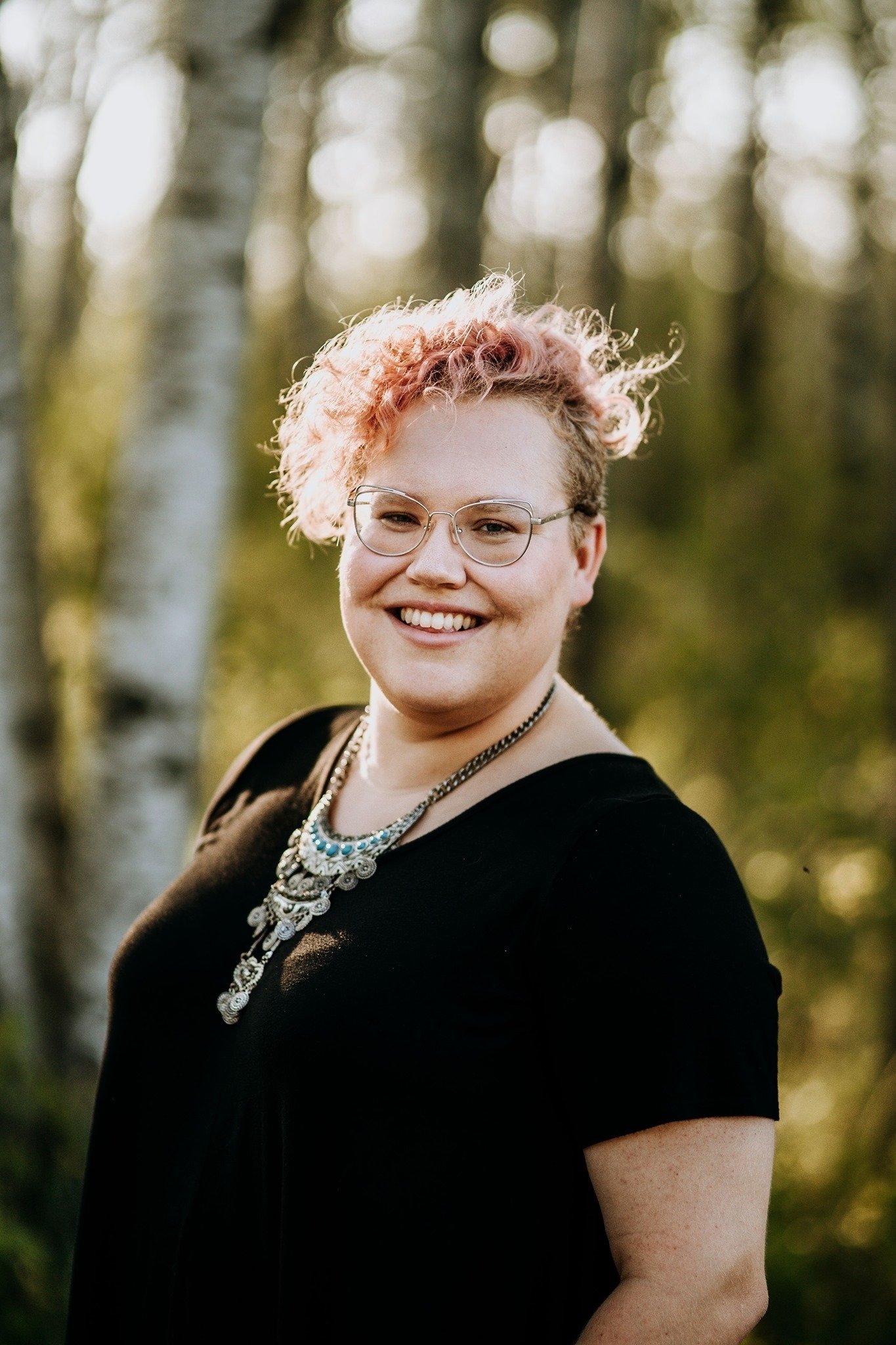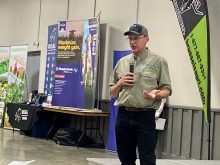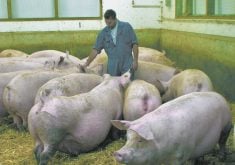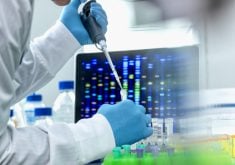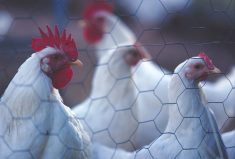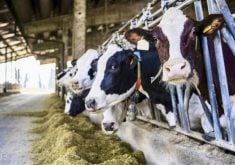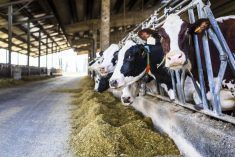Glacier FarmMedia – Canadian dairy farmers may be among the best positioned to take up regenerative farming practices, said producers during a panel discussion at the recent 2021 Regenerative Ag Conference in Brandon, Man.
Supply management means a steady income, which can give farmers more confidence to take risks, said Sean Smith, a dairy farmer near Minnedosa. Small herds make grazing more feasible, he added. The average Canadian dairy farm has 97 milking cows, according to Dairy Farmers of Canada.
Why it matters: Regenerative agriculture practices on dairy farms in Canada can reduce input costs for some operations.
Read Also
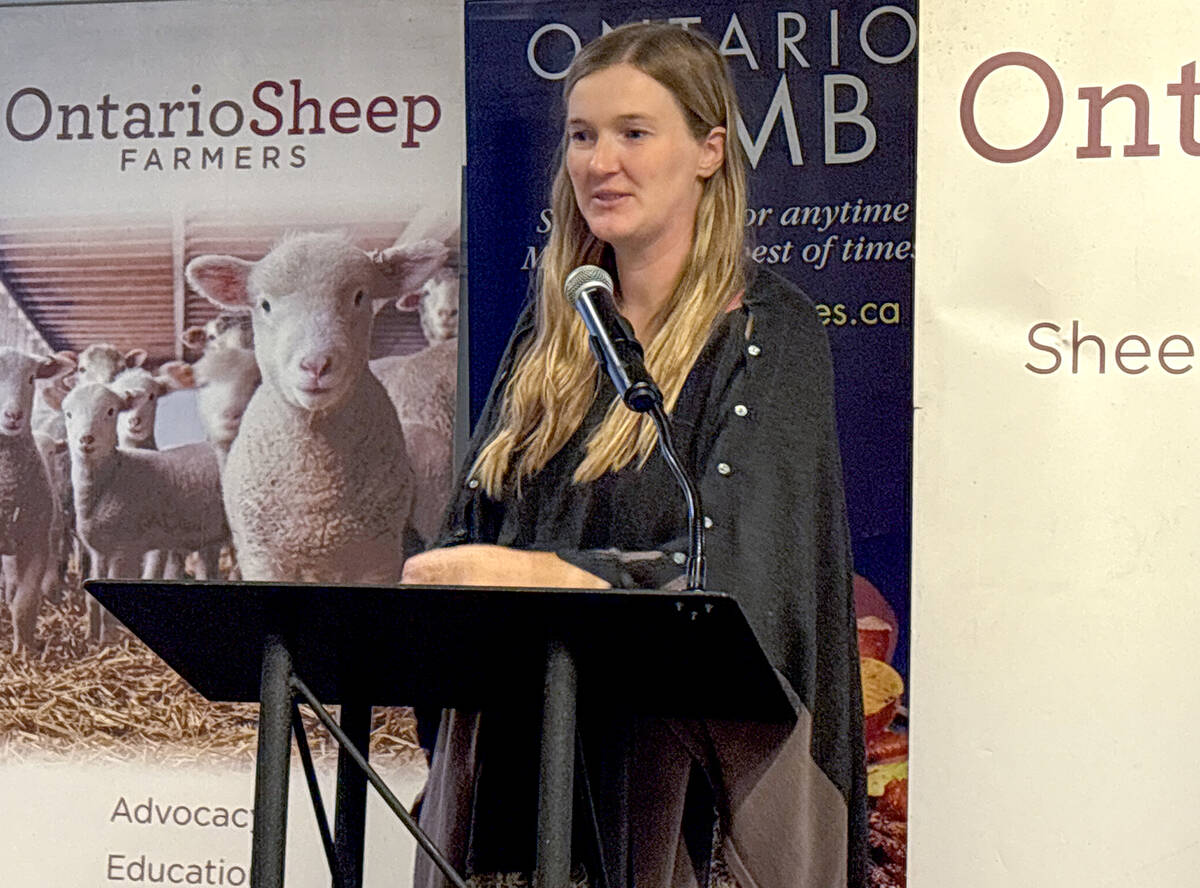
Footflats Farm recognized with Ontario Sheep Farmers’ DLF Pasture Award
Gayla Bonham-Carter and Scott Bade, of Footflats Farm, win the Ontario Sheep Farmers’ 2025 DLF Ontario Pasture Award for their pasture management and strategies to maximize production per acre.
“How are you possibly ever going to graze 5,000 cows and have them get milked that day?” said Smith. He was on the panel with Ile des Chenes, Man. farmer Henry Nyhof, and Birch Hills, Sask. farmer Paul Kernaleguen.
Smith raises Jersey cattle in a pasture-based system, which uses adaptive, multi-paddock grazing, multi-species forage blends and compost for fertilizer, among other regenerative practices.
His family turned to grazing the dairy herd as a labour-saving measure, he told the conference audience. The cattle begin grazing in late May and early June in 15 paddocks on their home quarter.
“Grazing our cows is the cheapest way to make milk,” Smith said.
Kernaleguen said his family began as “conventional as they came” before turning to regenerative practices “out of necessity.” Their area was inundated with rain in 2010 and 2011.
“We started farming islands,” he said. “We were literally getting pulled from one five-acre island to a seven-acre island with another tractor to get in there.”

Previously, their dairy cattle were fed corn, barley and alfalfa. With a shrunken base of productive land, the family decided to experiment. They planted oats on one of their ‘islands,’ and when the cattle ate that, other feed was considered too.
They started adapting to no till and planted cover crops.
Nyhof and his family have diversified their farm through value-added production, like using waste milk to feed pigs so they can sell milk-fed pork. Besides their herd of mainly Jersey cows, they raise 1,000 to 1,500 cattle in a feedlot and pasture some animals.
In an on-farm store, they sell pork, beef, eggs and Bothwell Cheese made from their own cows’ milk.
Their regenerative agriculture journey began with a move toward zero till. They had contracted field work to a farmer who was zero till, so he used similar methods on their farm. It worked well.
A few years ago, Bothwell Cheese approached them to produce non-GMO milk. The family had to find new ways to get protein for their animals, and that led to a total regenerative approach.
Nyhof’s dairy herd doesn’t graze because of the logistical challenge of moving the large herd to pasture. Instead, they mow forage and collect it using a self-loading wagon. They can then deliver it to the cattle with no shrinkage.
Regenerative results
Panel moderator Lawrence Knockaert asked the farmer panelists if they saw a difference in butterfat content when grazing their dairy herds. Under supply management, farmers are paid on the basis of kilograms of butterfat.
Nyhof and Smith said when grazing or relying heavily on forage, butterfat production drops. Nyhof said they control this by supplementary feed.
Smith said he gives the cattle a ration in the barn but has found he can halve the dry matter and supplement. Despite the lost butterfat, Smith said they’re saving $150 per day on rations, with additional savings on manure cleaning, bedding and footbaths.
“Maybe the cheque isn’t as big, but we’re making more profit per kg shipped,” he said.
Kernaleguen said their cows’ overall health improved. On a higher forage base, the cows are healthier and less fazed by challenges, he said.
The farmers also saw changes to land.
Kernaleguen said soil water retention improved with no till and cover cropping. Nyhof said he saw changes to soil tilth.
Smith said they’ve been able to measure an increase in organic matter. Tests this year showed gains of about two per cent organic matter over six years in some hayfields. This was particularly satisfying, Smith said, since shortly before the test a friend claimed it was impossible to gain one per cent organic matter in 10 years.
“That’s something they can understand and wrap their head around,” Smith said.
He has also tested fields and pastures for water infiltration capacity, he added. One intensively grazed pasture could absorb five inches of moisture equivalent in 45 minutes, up from three inches per hour in a rarely grazed hayfield.
A nearby conventional field Smith tested for a comparison rapidly soaked up one inch of water, he said. The second inch sat on the surface.
Managing manure
The three farms have different ways to incorporate manure. With only 180 acres available, said Kernaleguen, a 2019 soil test came back “all red.” The lab tech told them to stop spreading it, so they’ve been ‘donating’ it to neighbours’ fields.
Nyhof composts the bedding pack and sand used by his dairy herd. The manure breaks into a powdery, black mixture that’s easy to spread onto a standing crop or after a first cut of alfalfa, he said. After a rain shower, it’s immediately available to the plants, he added.
In their dairy barn, Smith’s family uses a compost pack made of shavings from a local mill. They cultivate it twice daily with a small tractor. The compost heats up enough to kill bacteria, which prevents mastitis in the cows, Smith said.
Once the barn is full, they move the pack outside to continue composting and spread it in spring, usually on fields planted to annuals. They spread liquid manure monthly on paddocks that have just been grazed, Smith added.
Push-back
An audience member asked the farmers if supply management impedes innovation into regenerative farming.
“I don’t think it actually impedes anything,” Smith said. Most other farming sectors don’t have supply management but, “there’s an equally few amount of people practising it,” he said.
“I think it more comes down to innovation.”
Kernaleguen said he’s seen skepticism from fellow farmers, but also genuine interest.
Supply management is “numbers, numbers, numbers all the time,” he said. He can demonstrate that his input costs are now much lower, which makes producers more interested in dialogue.
Geralyn Wichers is a reporter for the Manitoba Co-operator. Her article appeared in the Nov. 25, 2021 issue.



